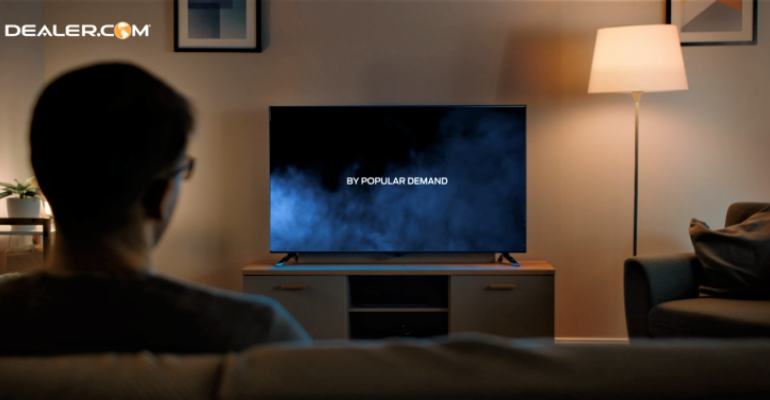Video has been a popular and effective advertising medium for car dealerships since cable first made local TV ad spots possible. In the early days of video advertising, it was okay for dealers to put all of their eggs in one basket because there was only one basket: cable.
However, this has rapidly changed, as giants like YouTube, Facebook, Hulu, Roku and countless other digital streaming platforms and devices have transformed how and where we watch video – crowding the once exclusively cable space. Today, nearly a quarter of all car shoppers have “cut the cord” or severed their cable contracts in lieu of internet-based devices or streaming services. In fact, almost three out of four 18- to 34-year-olds have never subscribed to cable, already cut the cord, or plan to.
These trends are forecasted to expand across all market segments. Navigating this new vast and intricate ecosystem might sound daunting, but luckily, the right technology can do most of the heavy lifting for dealers, and in many ways, do it more cost effectively than cable ever could.
As dealers look for partners to help them conquer this new world of video advertising, there are a few tips advertisers should keep in mind:
Don’t get caught up with any one device or platform: With so many devices and content providers to consider, it’s easy to get distracted by which ones you should use. However, the most effective solutions take an audience-first approach and deploy ads to in-market shoppers regardless of where or what they are watching. This approach increases exposure and delivers the most relevant reach.
Do dig into the right data: An audience-first approach relies on predictive data modeling to work its magic. The goal of this data utilization is to ensure video content is being presented to a person who is actively in the market for a new car, and not someone who still has a year or two on their lease.
But not all data is created equal. Some solutions use metrics such as loose demographics and past purchase history, which cast a wide net and aren’t always the most effective. Choose a hyper-targeted solution that uses real in-market data from highly engaged consumers to increase efficiencies and ultimately generate return on advertising spend across the video ecosystem.
 Be protected and diligent: As streaming video consumption continues to rise, unfortunately so do opportunities for advertising fraud. According to a recent study, 18% of ad requests for streaming video inventory are fraudulent. This is because video impressions are more expensive than traditional display advertising, so it’s an attractive channel for fraudsters to maximize profits. It can be easy to protect your investment with fraud protection tools, which help verify that ads are being served to real humans and not programmed bots. Fraud protection tools should be built into any platform worth considering. Plus, fraud protection boosts trust and transparency associated with your dealership, in turn making viewers more willing to do business with you.
Be protected and diligent: As streaming video consumption continues to rise, unfortunately so do opportunities for advertising fraud. According to a recent study, 18% of ad requests for streaming video inventory are fraudulent. This is because video impressions are more expensive than traditional display advertising, so it’s an attractive channel for fraudsters to maximize profits. It can be easy to protect your investment with fraud protection tools, which help verify that ads are being served to real humans and not programmed bots. Fraud protection tools should be built into any platform worth considering. Plus, fraud protection boosts trust and transparency associated with your dealership, in turn making viewers more willing to do business with you.
Don’t think of this as additional advertising spend: You might be thinking you can’t afford to expand your current advertising budget and if so, you’re not alone. These are challenging times. The good news is that the latest video advertising capabilities aren’t supposed to be in addition to more expensive TV budgets; they are intended to replace or supplement them – and ultimately get more bang for your buck. Where traditional TV leans on a viable customer tuning in, Connected Video guarantees video content is being served to a vetted buyer. This successfully converts more views into sales opportunities and doesn’t waste precious dollars on saturating television shows with repetitious ads.
Do expect to see results: The ability to execute video advertising across all channels from a single platform means not only efficient advertising, but also efficient advertising spend. How? Look for solutions that offer on-demand reports that focus on transparent, video-specific KPIs such as completion rates, unique households reached, impressions served per placement and device, and view-through metrics (the percentage of people who saw a video and visited a website). A holistic digital video advertising portfolio with advanced targeting can reach an audience two to five times more likely to buy than competitors, which you should expect to see reflected in your lead and sales numbers.
When it comes to video advertising, perhaps the most important “do” for dealers and advertising partners is to be flexible. Video consumption habits are evolving quickly, and being open to new platforms, devices and strategies is necessary to reach in-market shoppers where they are or will be. Holistic, multi-channel capabilities paired with advanced data are the building blocks for engaging in-market audiences today and tomorrow.
Scott Blodgett (above, left) is senior manager of product management at Dealer.com.





